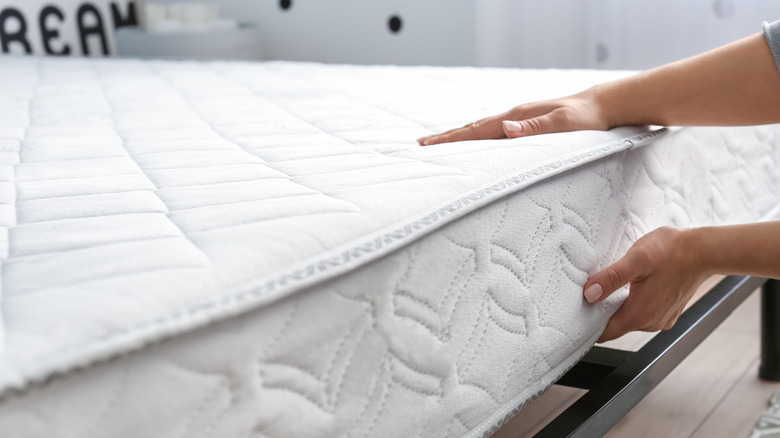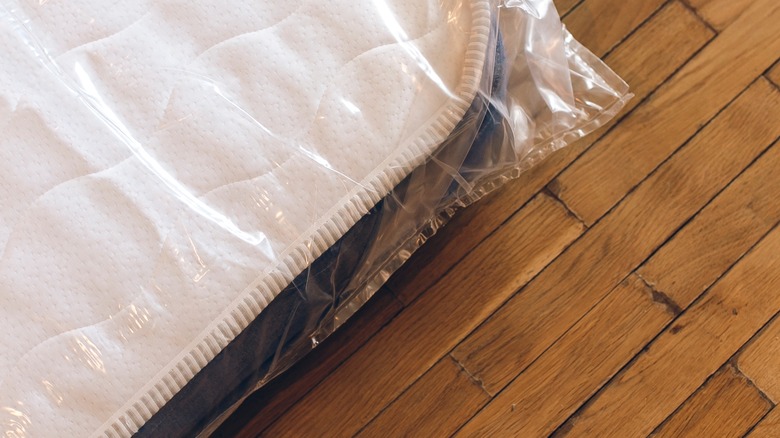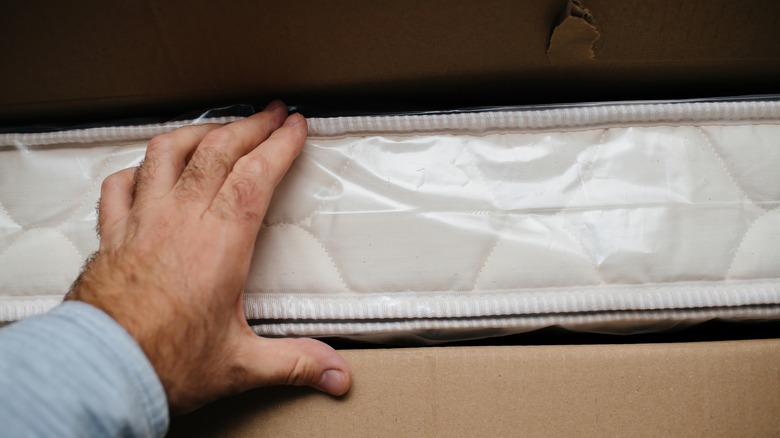The Right Way To Store Your Mattress When It's Not In Use
Homeowners often find themselves needing to stow away an additional mattress that is no longer necessary in their house. As a result of a move, when a child goes off to college, and for a million other reasons, people might need to remove it from their home's living space. You may be able to get rid of this bedding feature, but if you require it again in the future, how you store it is an essential part of this process.
The truth is that storing your mattress can be done in a number of ways (via ExtraSpace Storage), and it really depends on the kind of mattress in question and the length of time that you'll need to keep this piece of furniture out of commission. The best way to store it is flat down in the same way that you would keep it if you were using it to sleep on. However, this won't be feasible for everyone, and spatial constraints, mobility issues, and other factors will play a role in how and where you keep this bedding feature.
Even as the objectively best way to store your mattress is clear, this doesn't mean that it's the only way. Homeowners can tackle this problem through several different approaches, and alternatives to the flat storage option can be equally valuable. Continue reading to learn more about the best conditions and additional considerations for mattress storage in your home.
Store the mattress flat and use a mattress bag
The best way to keep your mattress safe and usable long-term is to store it in a mattress bag and place it flat on the floor of your storage space. Keeping the mattress flat will ensure that no internal components are dislodged while it isn't being used and that no lumps or deformations can present themselves in it when you take it back out of storage and want to use it again. Of course, these considerations only become a concern if you plan on storing the mattress for years. For short-term storage, there's no reason why tilting this bedding feature upright against a wall, either vertically or horizontally, won't work for your needs (via Krostrade).
Therefore, to understand the best way to store your mattress, you'll need to think about how long you intend to hold on to this piece of furniture without using it. The same goes for a mattress bag; this is essential when placing this bedding feature in the attic or a storage unit for months or years at a time. However, if you're only storing it during a move, for instance, then it's likely that a bag won't play a significant role in protecting your bedding. Still, they are an important tool and protect your bed from dirt, dust, and other debris that may be present in your storage location.
Keep the mattress in a dry and sealed-off area
No matter how you store the mattress, the area you choose to play host matters significantly. Terry Cralle reports that you should always store these bedding features in a dry location to prevent the fabric and interior components from developing a mold or mildew problem. According to Sleeping Ocean, moisture can ruin a mattress, and in the worst-case scenario, it will invite bacteria and other problematic substances you don't notice. Sleeping on a mattress that's been afflicted with these issues can be highly problematic for your health.
Another issue to consider when storing this furniture piece is the accessibility of the space for pests or rodents. Mattresses are made of naturally warming and insulating materials, so an attic that bugs, mice, or raccoons can penetrate is one that should be avoided. This bedding feature is a prime addition for these pests, and if left unattended for long enough in a vulnerable space, there's a good chance that when you pull it out of storage, you'll be bringing along hitchhikers as well. Therefore, a dry and secure location for your mattress is crucial, especially when storing it away for the long term.


